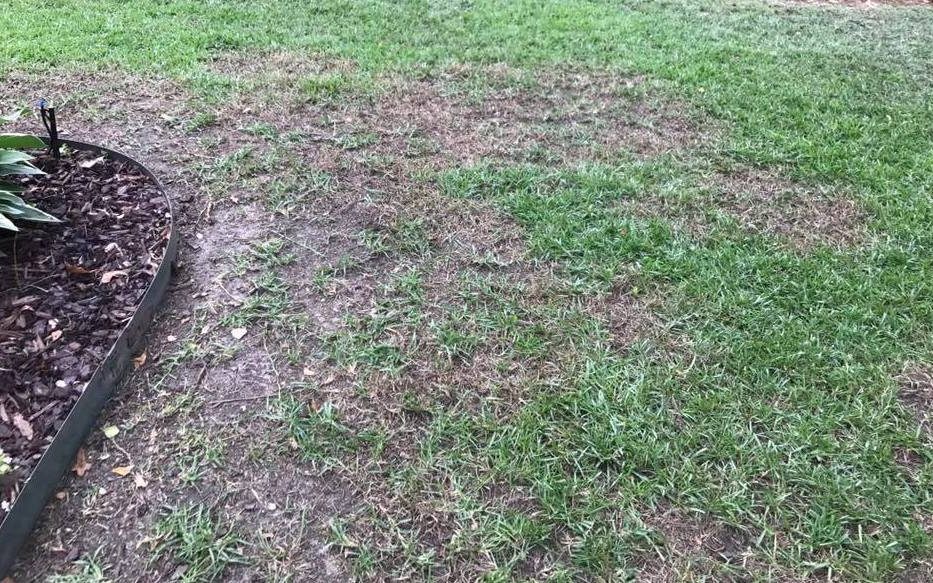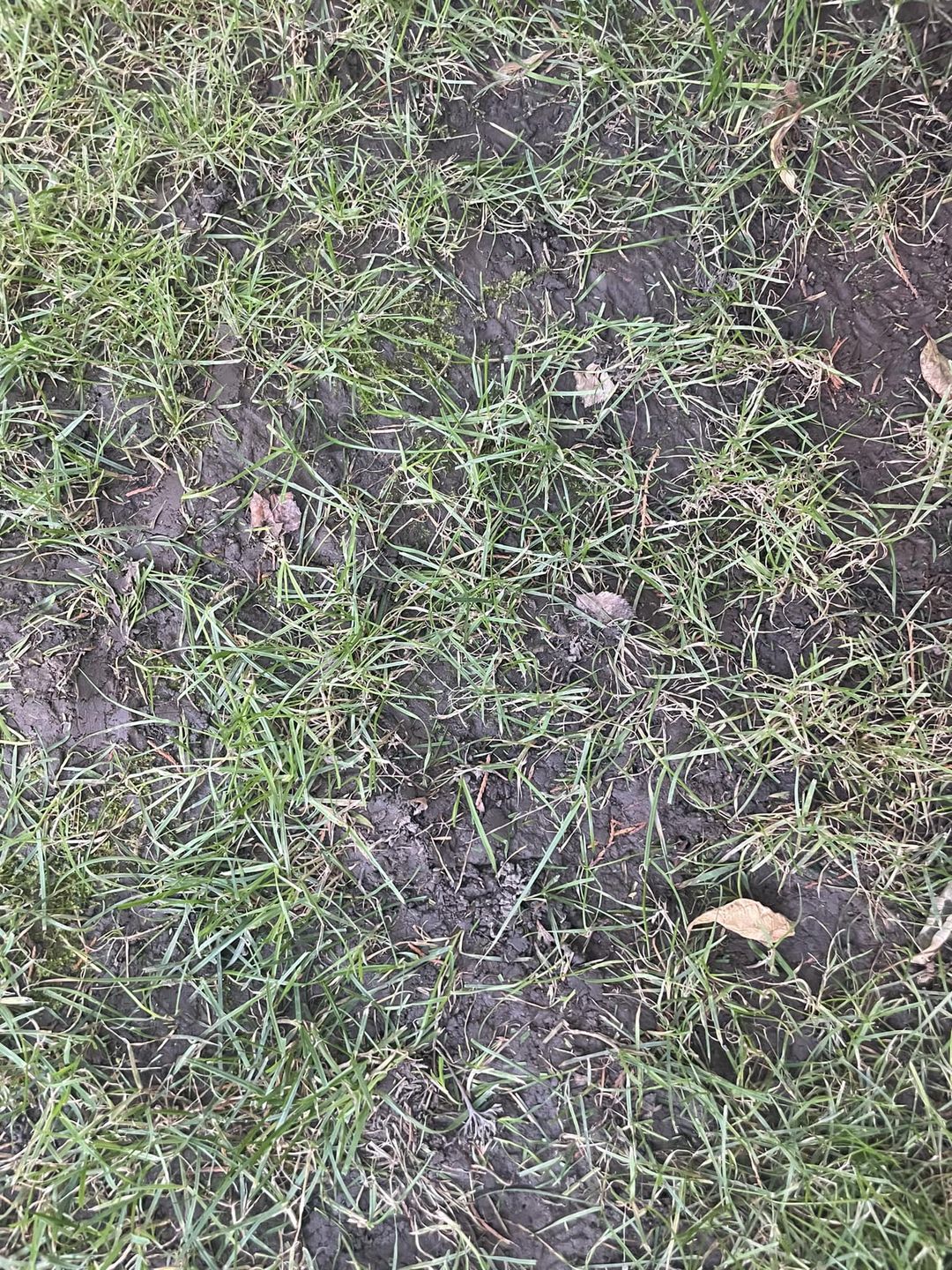Thinning grass isn’t anyone’s dream for a healthy, beautiful lawn that feels good on your feet. Therefore, it’s only understandable to worry when your new sod is thinning out.
That will likely have you wondering what could be causing the problem and how you can fix it and revive your grass.
Different causes can make your new sod to thin out, ranging from poor maintenance to environmental causes. These include pathogens and pests, not fertilizing the grass, undesirable soil PH, mowing too low, and improper irrigation.
So, if you envision a green, thick, lush lawn, you will need to get ahead of this problem.
The first step is to find out the cause so that you can tackle the problem correctly.
Why is New Sod Thinning Out?

New sod thinning out could be cause by lack of sunlight, lack of fertilizer, poor watering routine or mowing low.
Below are the most common reasons for new sod thinning out:
1. Mowing low
Cutting too many grass blades lowers your grass’ photosynthesis, causing insufficient energy production as the grass dies slowly. This occurs when you cut your new sod too low and too soon.
New sod is especially more vulnerable, so you must be gentler when mowing a new lawn than cutting an established yard. In addition, don’t mow new sod too early; give your new grass time to grow strong roots and implant itself firmly into the soil.
It’s best to keep your grass at least 11/2 inches long in fall and mid-spring when the climatic conditions are conducive and the grass is actively growing. When summer comes, you can let your grass grow even up to 3 inches for maximum photosynthesis and curb heat stress.
Generally, stick to removing 1/3 of the grass’ height whenever you mow to avoid stressing the structure of the grass blades. Moreover, ensure you use a sharp blade to prevent cutting too low.
Read More:
Scalped grass and dull blades result in stress, which then invites weeds, diseases, and pests of various kinds.
2. Poor Watering Routine
Watering new sod is crucial because sufficient moisture is needed to establish a strong root system. While watering your grass will become less frequent once it matures, the first 14 days are highly critical and entail proper soaking.
You must water your lawn at least twice a day for the first two weeks following installation, ensuring the soil is saturated but not soggy. Your grass requires deep watering of about 6-inch deep, and the water needs to move into the ground slowly for the roots to absorb it, but fast enough to prevent sogginess.
Therefore, examining your watering habits should be among the first things you do if you have a receding lawn.
It would be best to invest in an irrigation system or oscillating sprinklers for your lawn instead of watering with a hose.
3. Shade
Lack or insufficient sunlight could be the reason your lawn is thinning out. This can happen if there are tall shrubs or trees in your yard that block your grass from receiving sunlight.
Read more: Can Sod Grow In Shade?
You will notice that you have patchy grass with your lawn thinning out in areas covered by heavy shade.
4. Pathogens And Pests
Sporadic thinning of your lawn can result from pathogens and pests, so make sure you inspect your grass blades, looking for signs of infestation. For instance, bacteria and fungi often manifest in the form of darkened residues or spots across your grass.
On the other hand, it can be more challenging to uncover white grubs as it requires lifting part of the new sod.
5. Fertilizer
You should fertilize your sod to grow a green, thick, healthy lawn. Your grass will start to thin out if you are not providing it with enough food, as it will suffer from nutrient deficiencies.
Ensure you supply your lawn with the correct potassium, nitrogen, and phosphorus ratio to avoid having patchy grass. However, wait for at least 60 days before fertilizing your new sod to allow the grass to develop roots; it will need to absorb the nutrients
6. Poor Soil PH
Most grasses thrive in relatively acidic soil, preferably soil PH of 6 or 7. Therefore, your new sod will suffer if the soil PH is too low or too high.
7. Compacted Or Hard Soil
Your lawn will become compact over time if you develop a habit of conducting activities like frequent cookouts or letting your kids and pets play on it. The problem is that compact or hard soil makes it pretty hard for nutrients, oxygen, and water to penetrate the ground into the roots of the grass, leading to a thin lawn.
How to fix New Sod that Is Thinning Out
Once you diagnose the cause of thinning of your new sod, fixing the situation becomes exceptionally effortless. Below are some things you can do to fix the specific causes of your patchy grass:
- If your new sod is thinning because of heavy shade, thin out the canopy of your shrubs or trees to allow more sunlight to reach the grass.
- Make sure your sod is well watered without oversaturating it. It would be best to develop a watering schedule designed based on the needs of your lawn and the climatic conditions in your area.
- Keeping a friable and fertile lawn with good drainage helps keep pathogens and pests away. An adequately drained lawn doesn’t form water pools which are usually the best breeding grounds for pathogens.
- Soften the soil by lifting the sod and filling compost and topsoil under it.
Overseeding A Thinning Lawn
Planting new grass seeds in the patchy parts of your lawn will help rescue your receding lawn, transforming it into a thick yard. However, before overseeding, you will need to rake the lawn with a power rake to expose the bare soil, make sure the seeds go into the topsoil and remove any thatch.
However, don’t rake your lawn if it hasn’t been about two to four weeks since laying sod because the turf may not be firmly rooted on the ground yet.
Read more: Laying sod next to existing grass
Once you finish preparing your lawn, scatter grass seeds on your yard, then apply topdressing, ensuring the seeds are covered. Gently rub the compost or soil using your hands, the back of a garden brush, or a rake to make sure it’s touching the ground and not sitting on top of the grass.
While grass can grow if you just throw the seeds on the ground without applying topdressing, it’s at the mercy of the weather, birds, and other seed-eating creatures. It will wash the seeds away if it rains, and strong winds will also blow them away, so it’s best to cover them.
Read more: How to overseed lawn without aerating
You can apply topdressing with your hands or use a spreader to make your work faster and more efficient. Besides applying the topdressing, a spreader also separates twigs from the compost.
The seeds will need moisture to germinate and grow, so keep the soil damp for about two weeks by watering the lawn a minimum of 2 times every day.
Conclusion
To summarize everything.
Here are 7 reasons why new sod is thinning out:
- Poor Watering Routine.
- Mowing your lawn too low.
- Lack of fertilizer.
- Shade.
- Compacted Soil.
- Poor Soil PH.
- Pests
It’s disheartening and frustrating to see your new sod thinning after working hard to establish it. Fortunately, you can easily find out the cause and take the necessary steps to address the issue and get your grass back on the right track.

Hey there, I’m Derek Schew, a writer for Lawnholic.com, where we cover everything and anything related to lawns. As someone who’s spent countless hours tending to my own lawn, I’m passionate about sharing my knowledge and helping others achieve the perfect yard. From lawn care tips to product reviews, I’m committed to providing our readers with the most accurate and up-to-date information available. So whether you’re a seasoned lawn enthusiast or just getting started, I invite you to join our community and discover the joys of a lush, green lawn.

